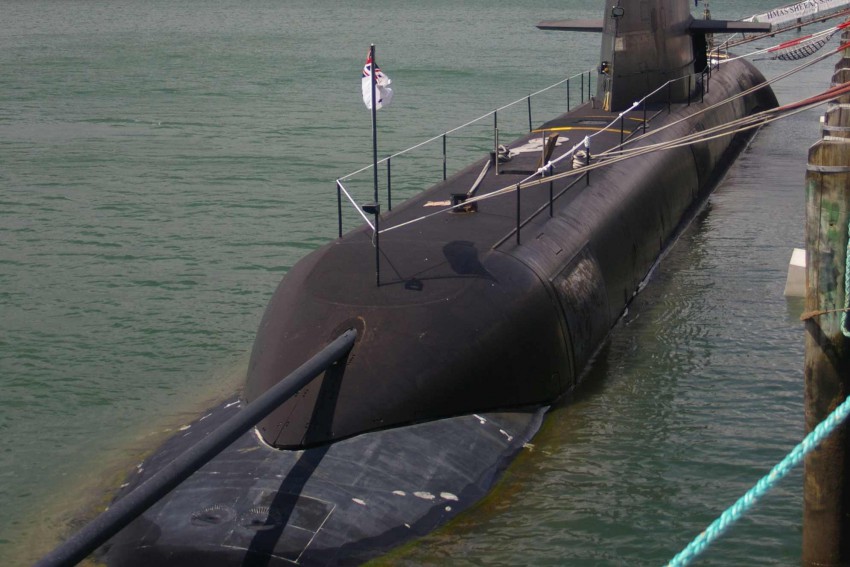Suboptimal solution could sink shipbuilding industry

Few things unite our major political parties in South Australia. An exception is the threat that Australia’s next generation of submarines might be built offshore.
Few things unite our major political parties in South Australia. An exception is the threat that Australia’s next generation of submarines might be built offshore.
The Premier and the Leader of the Opposition joined industry and community leaders at a recent Defence Industry Policy Summit to put the case for the submarine building program to be based in Australia. All agreed that purchasing submarines offshore was a suboptimal solution, one that would undermine Australia’s naval ship-building capability leading to the loss of thousands of jobs in South Australia, Victoria and Western Australia.
The stakes are high. A skilled workforce of around 1400 is currently working hard at Techport on the Air Warfare Destroyer program, which is scheduled to end around 2017 – worryingly around the time that our car industry closes. Continuity of naval shipbuilding is not only needed to retain an incredibly valuable navel ship capability in Adelaide but also to avoid self-reinforcing decline in our manufacturing industry. Part of the solution is obviously to ensure that Australia’s next generation of submarines is built here, providing a continuous flow of work that enables us to manufacture fit-for-purpose vessels that meet both our national security and economic development objectives. This is, of course, what other nations with submarine capability do. Can you imagine the United States, Sweden or Germany ever contemplating another nation building their submarines?
Submarines are among the most technically sophisticated and secretive weapons in a nation’s defence armoury. You can’t buy them off the shelf, as every class of submarine is built to meet national security objectives. While stealth, firepower and reliability are overriding considerations, geo-politics looms large in making decisions about which submarine technologies to adopt. At the end of the day, Australian submarines must be able to navigate the complexity of the oceans that surround the nation, including operations much longer in duration than those required of the class of Japanese submarines under close consideration.
There is much to be gained from manufacturing submarines here in Australia and a great deal to be lost if we don’t. The National Institute for Economic and Industry Research estimates that Australia’s GDP would be around $20 billion less if an overseas build option is pursued. High-skill and high-wage jobs would be generated from a local build – estimated to be around 3000 jobs per annum.
While the case for building the next generation of our submarines in Australia appears overwhelming, the prospect they might be built offshore is a very real one. The Summit called on the Federal Government to make a decision based on an open tender, ensuring that the Australian-made alternative is not locked out by a preferential deal with Japan or any other submarine-manufacturing nation. Some senior members of the Coalition are on board with this, but many more will need to be persuaded to ensure that Cabinet keeps the Australian-made option alive. If the political consensus on display at the Summit builds momentum over months to come there will be some cause for optimism about the outcome.
Federal Budget Hits SA Households
It is not surprising that in the drive to achieve budget savings, thousands of South Australian households are worse off as a result of the widespread changes to income support and other measures introduced in the Federal Budget. What is surprising is how hard the changes impact on the disposable incomes of the nation’s poorest households. Analysis of the household impacts of the Budget by the National Centre for Social and Economic Modeling in Canberra demonstrates that the budget savings burden fall most heavily on couples with children and single parents. Low-income couples with children are set to experience a 6.5 percent ($2,780) reduction in their annual income while most single parents lose around $3,700 a year.
Fewer jobs will be generated in South Australia as a consequence of less health and education funding coming to Australia than was expected under partnership agreements with the Federal Government. My centre (the Australian Workplace Innovation and Social Research Centre) has calculated that these losses translate into around 7,000 fewer jobs in 2017-18 than otherwise would have been the case if the Federal Government had honored health and education agreements with the South Australian government.
If you want to learn more about how the Federal Budget impacts on South Australia please have a look at a recent report that the Australian Workplace Innovation and Social Research Centre did for the State Government’s Federal Budget impacts taskforce: adelaide.edu.au/wiser/pubs.
John Spoehr is Executive Director of the Australian Workplace Innovation and Social Research Centre. The Centre was commissioned by the South Australian Government to undertake research on the impact of the Federal budget on South Australia